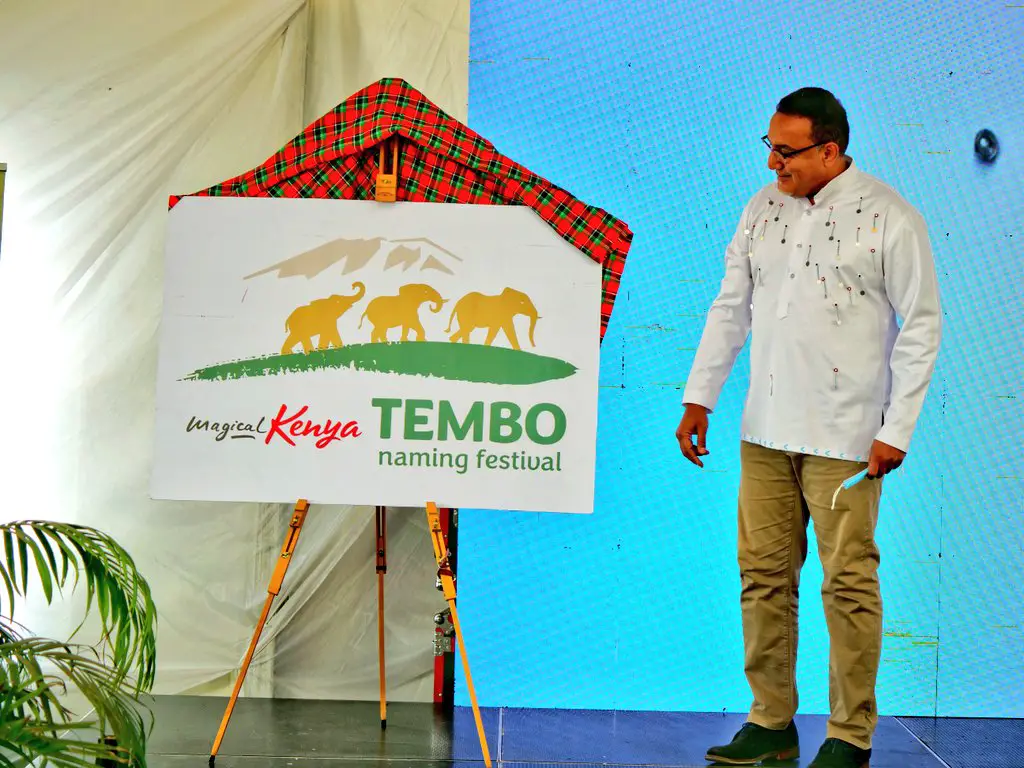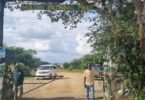The elephant naming festival at Amboseli National Park has been launched officially by Tourism Cabinet Secretary Najib Balala. Kenya will officially host the first annual Magical Kenya Elephant Naming Festival starting August 12, during World Elephant day.
With 1,800-2,000 elephants at the Amboseli National Park, this will be the first-ever wildlife conservation event.
The naming festival gives conservationists a chance to name elephants whilst promoting peaceful co-existence between communities and taming poaching.
Unique identities given to the elephants will secure their future and protect their habitat.
Balala said Amboseli remains Kenya’s only historic place where elephants can be traced through DNA.

Amboseli National Park. [Photo: Najib Balala]
Amboseli is iconic for its elephants. It is one of the best places to view large herds of Elephants up close making it a premium park and a must-visit tourist destination for most visitors.
Towards the end of 2019, 138 calves were born according to the Amboseli Trust for Elephants director Cynthia Moss.
Moss said that since the beginning of the year, the Trust has found new calves every month.
Amboseli’s ecosystem is widely known to favor the breeding and existence of the African Bush Elephants. It is in this park where you will find some of the largest jumbos in the country which pass off as friendlier than others in other parks within the country.
“The ability of a female to conceive and carry a calf to term depends greatly on her own physical condition. During drought years females may stop all reproductive cycling and not resume until rainfall improves with resulting vegetation growth,” Moss implored.
An elephant has a gestation period of 660 days – 22 months. Its birth intervals are about four and a half years.
The availability of good pasture for the elephants allows the build-up of fat reserves and more weight which are critical for conception.
The park located in the southern part of Kenya has a huge herd of African bush elephants with long tusks. They roam freely in the morning and evening when the heat is suppressed. During the day, they are at the Ol Okenya Swamp feeding.
Kenya’s largest elephant, Tim who spent all his life in Amboseli died in February 2020, aged 50.
Unlike other male elephants who live alone after reaching sexual maturity, Tim did not shy away from being in the company of female elephants.
Amboseli lies in the foothills of Mt Kilimanjaro along the Kenya-Tanzania border.
The idyllic landscape of Mount Kilimanjaro overlooking the park is exhilarating at dusk and dawn when the snow-capped summit shines brightly from afar, illuminating the park’s vicinity.
Amboseli National Park in the southern part of Kenya has a huge herd of African bush elephants with long tusks. They roam freely in the morning and evening when the heat is suppressed. During the day, they are at the Ol Okenya Swamp feeding.
Besides Kenya’s biggest elephants, the national park is also home to other members of the big five. The park is famously known for its generosity in housing lions, buffalos, and leopards.
Cape buffalos, impala, blue wildebeest, zebras, giraffes, hippos are also common at the park with occasional sightings of cheetahs and wild dogs. Visiting Amboseli is welcome throughout the year but the period between July to October (dry season) gives the best views of game as they cross the plains to watering points within the park.
The park’s swamp has 420 species of birds among them, 6 species of vultures, eagles (10), and 12 species of herons.








